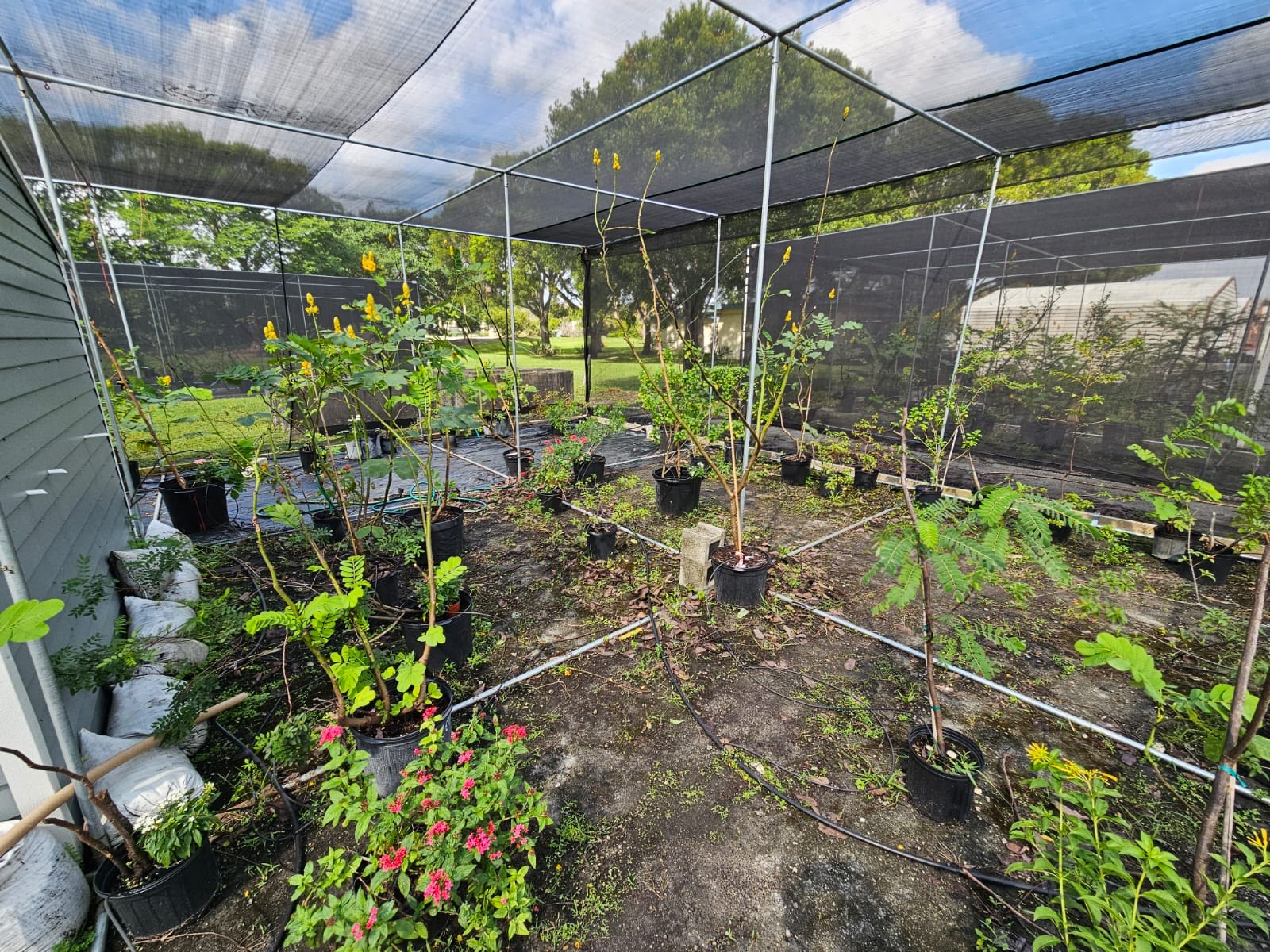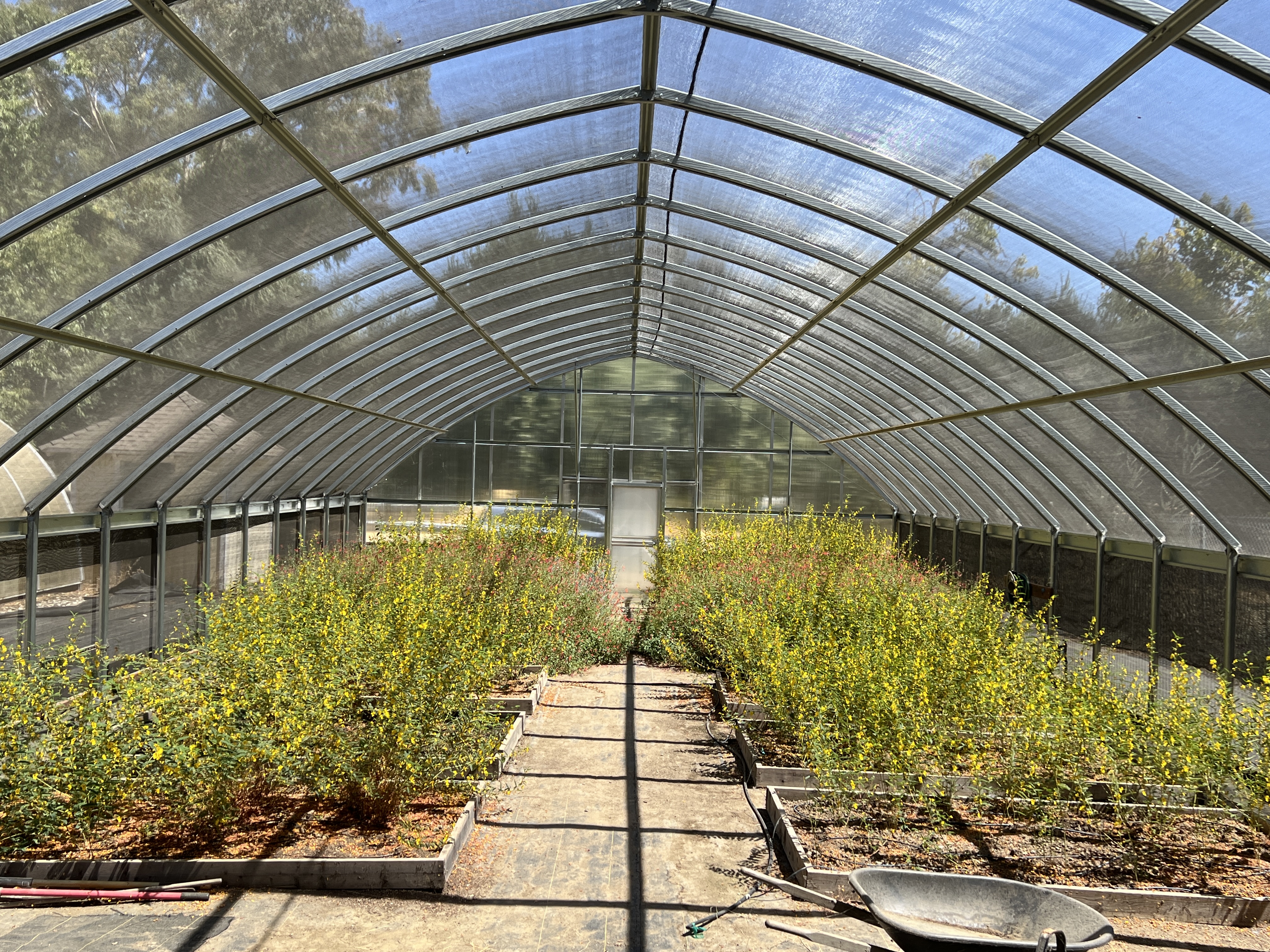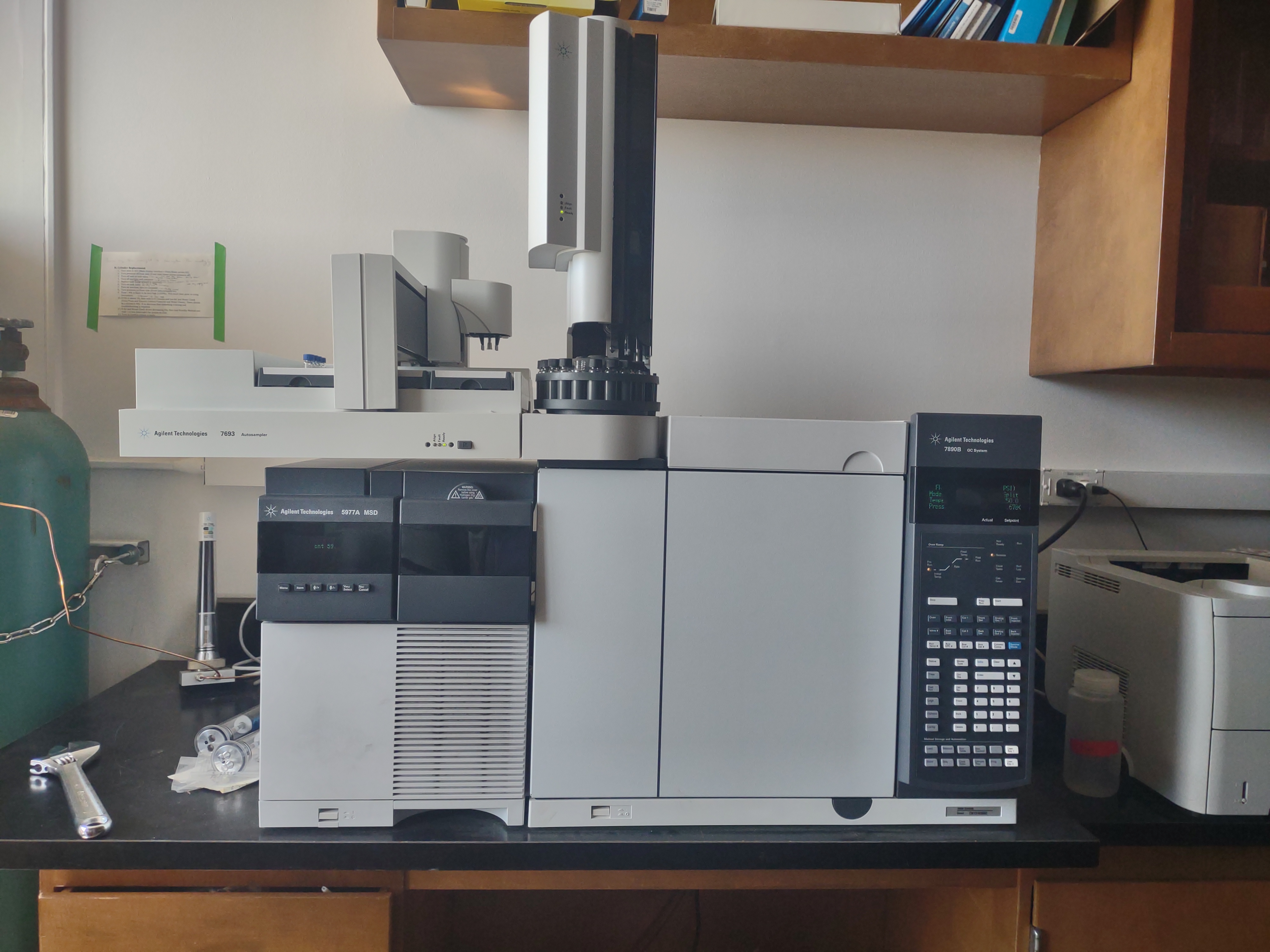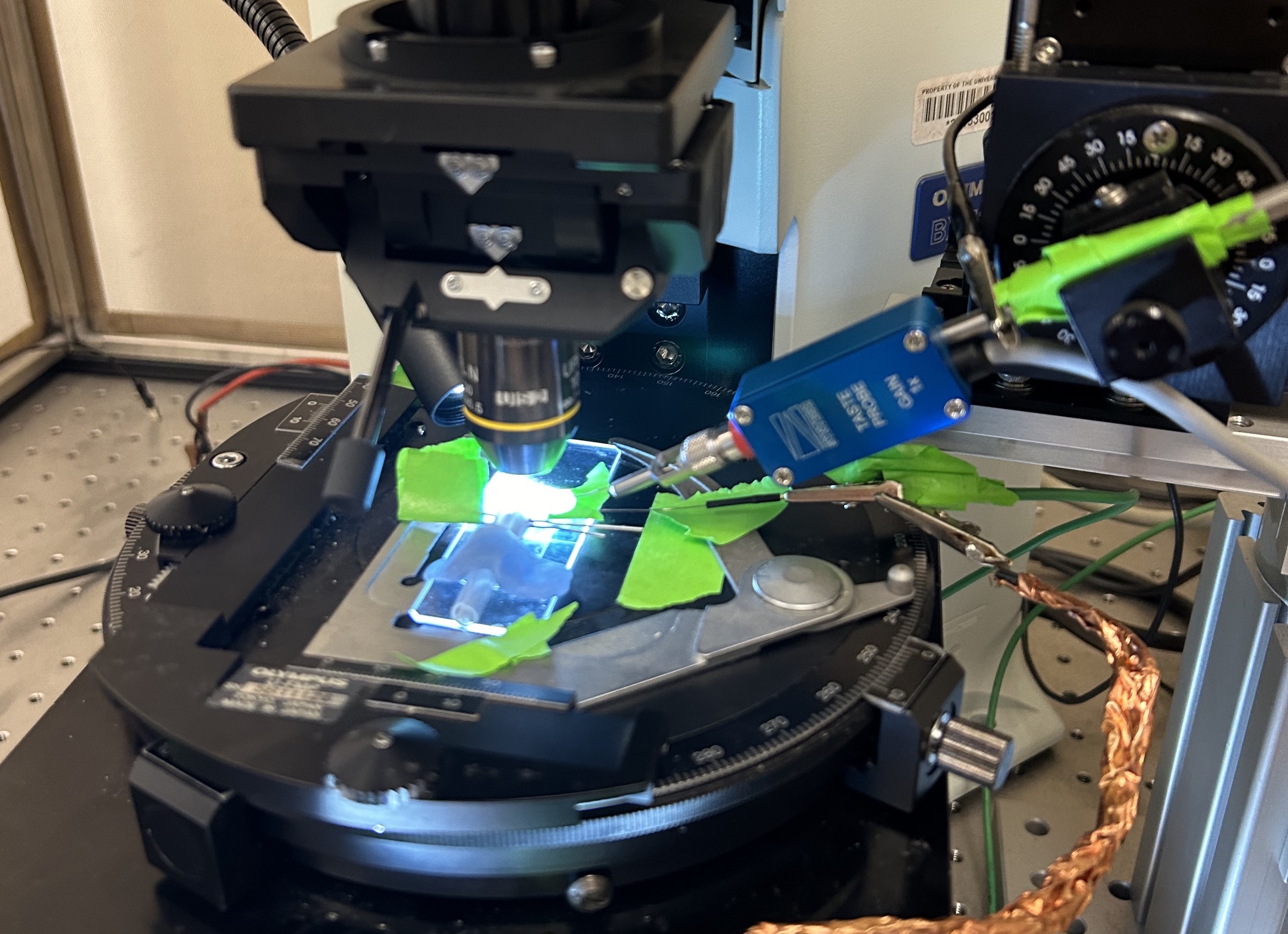Research
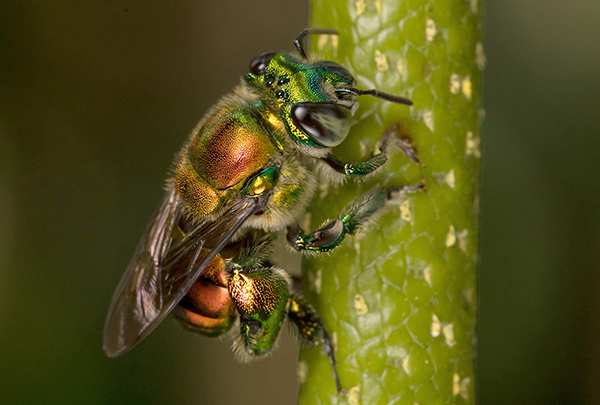
Overview
Chemical signaling is the most ancient and widespread form of communication across the tree of life. Insects use chemical signals to regulate a variety of behaviors, including social interactions, mating, foraging, navigation, and others. We use multiple approaches to study the function and evolution of chemical signals, including the genetic and neural basis of chemical emission and reception. We also study the role that chemical signals play in speciation in insects and plants via pollinator attraction. Our research is rooted in natural history, primarily in the charismatic orchid bees. We also study other organisms, including butterflies, bumble bees, carpenter bees, spiders, beetles, moths and plants.
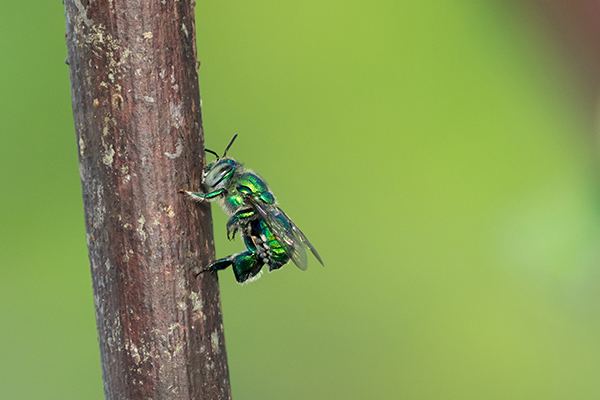
Chemical Ecology of Courtship Behavior:
We study how orchid bees detect, process, and respond to chemical signals involved in courtship. Orchid bees are unique in that males do not synthesize their own pheromones, but rather, they create pheromone-like mixtures by collecting volatiles from a variety of sources like orchids and fungi. Subsequently, males present perfumes to females in courtship display. Each species collects a unique compound blend, which we have shown play a key roles in both mate choice and species recognition. The orchid bee Euglossa dilemma has proven a tractable system to explore many of our interests in collaboration with labs from the University of Florida and University of Bochum. Using a various approaches, ranging to behavioral experiments, genetic sequencing to GC-EAD, we aim to understand how such a complex behavior may evolved how it plays a role in reproductive isolation and sexual selection.
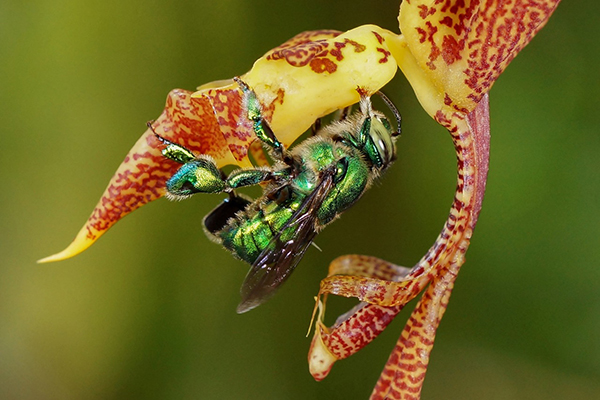
Pollinator-Mediated Speciation in Orchids
Orchids are one of the most speciose groups of flowering plants, and are most diverse in the tropical Americas. Key to their success are specialized relationships with pollinators. Several groups of orchids have independently evolved exclusive pollination by male orchid bees, exhibiting “perfume flowers” that emit only chemical rewards for males collecting their pheromone analogues. As bee preferences are species-specific, changes in floral chemistry can result in pollination by different bee species, driving the process of reproductive isolation. We use a diverse range of methodologies from natural history observations, analytical chemistry, population genetics, phylogenetic comparative methods, and functional genetics, to answer fundamental questions about evolutionary processes in this group.
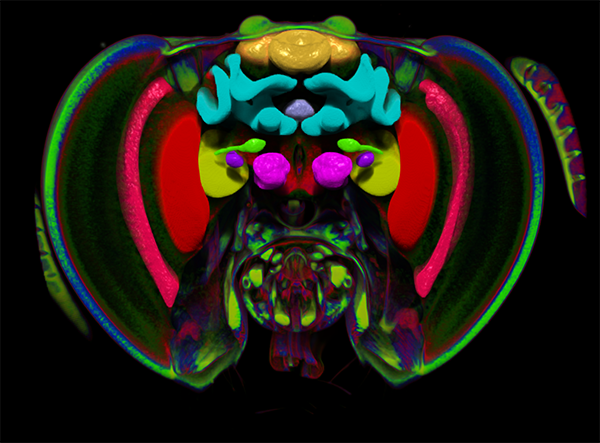
Evolution, Neurobiology and Behavior
We are interested in how the nervous system evolves and enables organisms to perform complex behaviors and respond to relevant environmental cues. The lab explores this through multiple levels of neural organization. We investigate how sensory cells respond to chemical signals using a variety of electrophysiological techniques like single sensillum recording and GC-EAD recordings. This will shed light on how a variety of insects’ olfactory and gustatory receptors are tuned over time to ecologically relevant cues. We also look at higher levels of organization within the nervous system by investigating the relative level of investment to different regions of the brain (e.g., volumetric measurements of mushroom bodies and sensory processing regions). Current research focuses on how sex, age, and social experience alter the development of different sensory and memory structures using micro-CT scanning.
Chemical communication in other systems:
We also investigate how chemical signals regulate different aspects of the biology of different invertebrates groups. For example, we explore how chemical communication plays a role in the reproductive isolation and speciation in the adaptive radiation of Hawaiian Tetragnatha spiders; the role of chemoreceptor evolution in bumble bee behavior; and the role of pheromones in carpenter bee courtship behavior.
Team
Current Lab members.
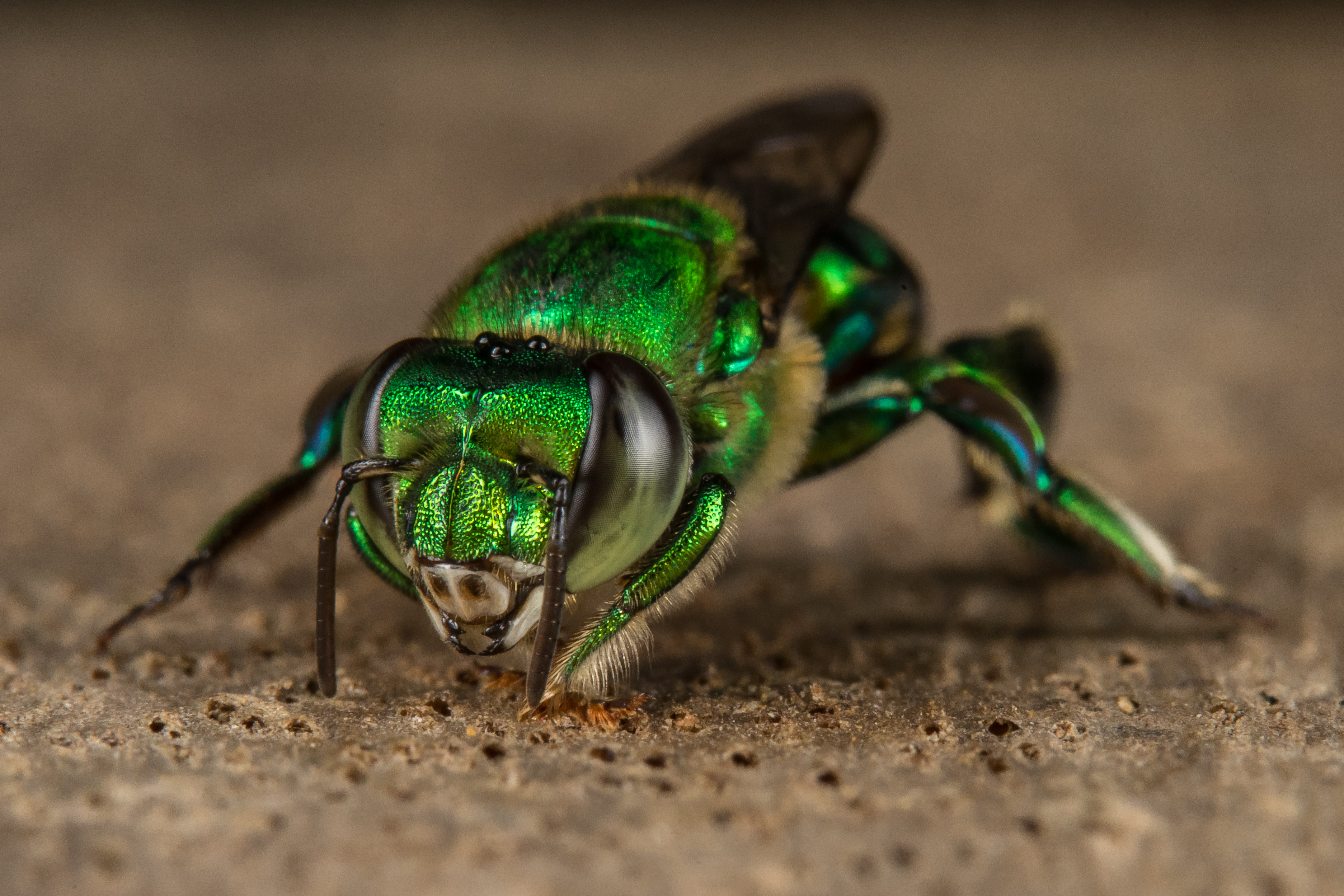
Santiago Ramirez, Associate Professor
Santiago received his B.Sc. in Biology at the Universidad de los Andes (Colombia). He pursued his Ph.D. at Harvard University and conducted postdoctoral work at UC Berkeley. Santiago is broadly interested in studying the adaptations, speciation processes, and ecological determinants that influence insect-plant associations. His work combines multiple approaches including ecological genomics, molecular phylogenetics, population genetics, chemical ecology, and natural history.

Peter Coggan, Graduate Student
Peter is interested in how sensory processing shapes memory formation and other cognitive traits. He is excited to combine techniques from neuroethology and chemical ecology to understand how neural circuits adapt to their environment
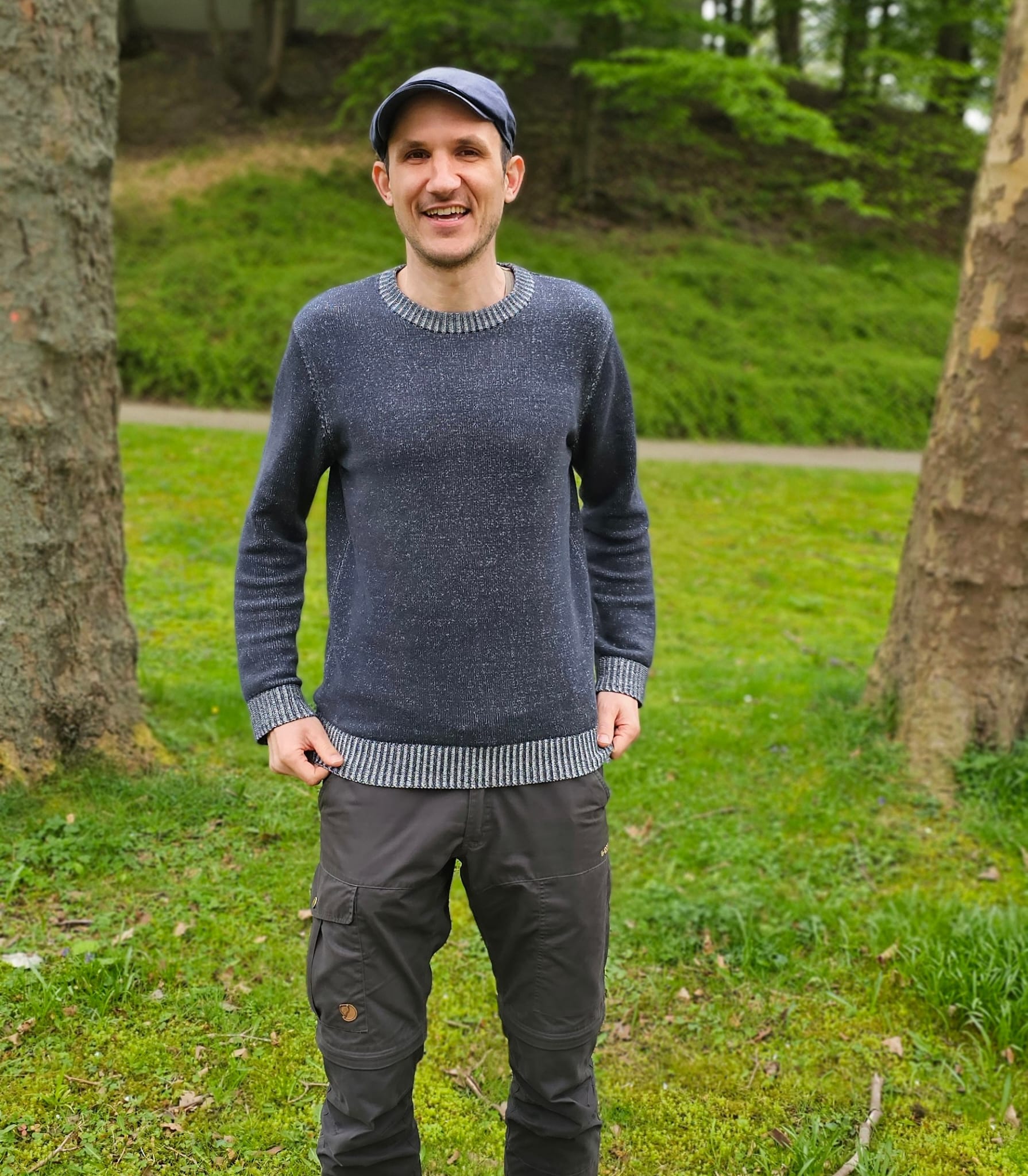
Jonas Henske, Postdoc
Jonas received his Ph.D at the University of Bochum, Germany. He is interested in chemical communication and mate choice. His research focuses on the ecology and evolution of orchid bees, taking an organismic approach that integrates chemical and behavioral ecology with experimental biology.
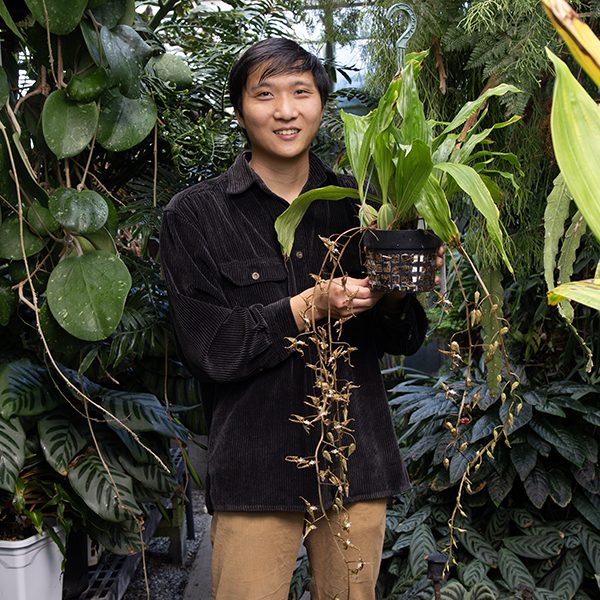
Jasen Liu, Graduate Student
Jasen is broadly interested in the effects of mutualisms on trait diversification. For his dissertation research he is investigating the influence of male euglossine bee pollination on evolutionary patterns of orchid floral scent and functional morphology. He uses a combination of phylogenetic comparative methods, analytical chemistry, and transcriptomics to address these questions at multiple levels of biological organization.
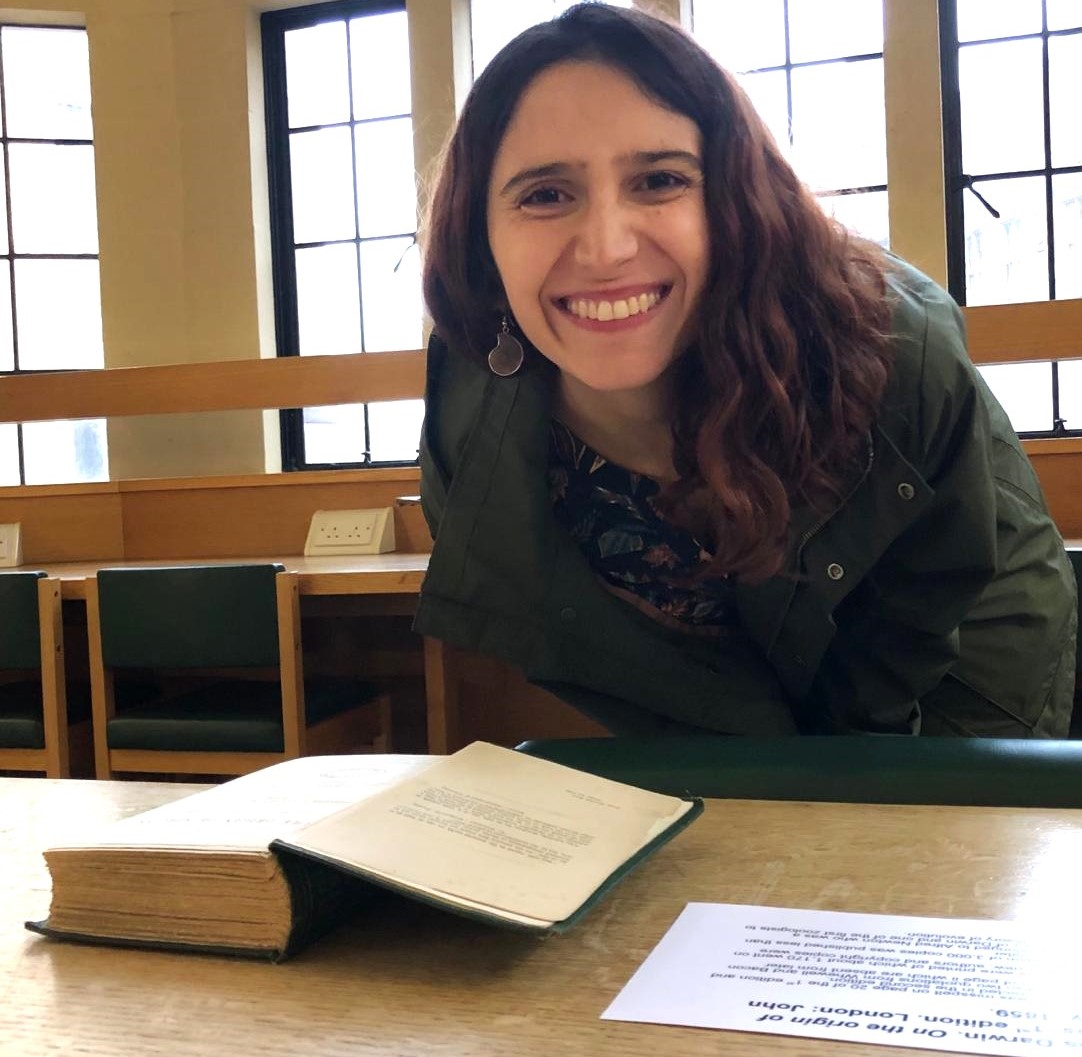
Denise Yamhure R, Graduate Student
Whilst completing her B.Sc. in Biology at Universidad de los Andes (Bogotá/ Colombia), Denise became fascinated by the close-fitting relationship between neuroanatomy, behavior, and ecology. Her undergrad thesis inspired her to pursue her current work, in which she seeks to study the link between brain plasticity, neuroanatomy and behavior in the orchid bee Euglossa dilemma. Denise uses a combination of state-of-the-art imaging methods such as micro-CT scanning and confocal microscopy to address her questions.
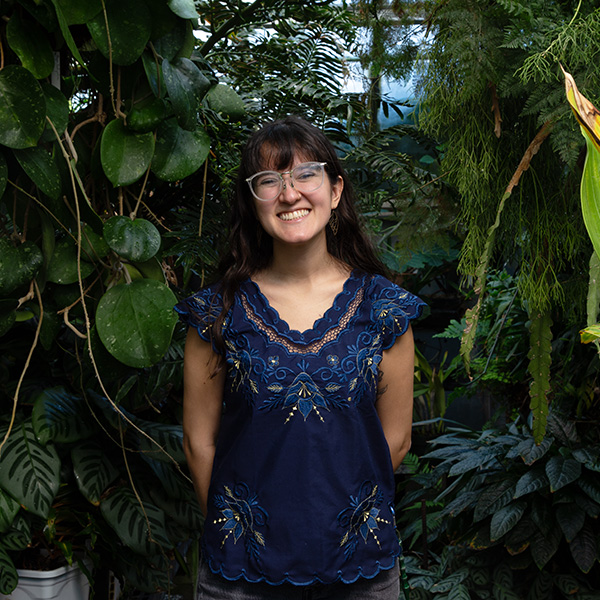
Marissa Sandoval, Graduate Student
Marissa is investigating the chemical ecology of an orchid bee mating system across different levels of biological organization, from interspecific differences to individual variation in courtship traits. Her research involves behavioral observations, experimental manipulation of sexual signals, and mating assays to answer questions regarding mate choice and its implications for reproductive isolation among orchid bees. She is in the Population Biology graduate group.
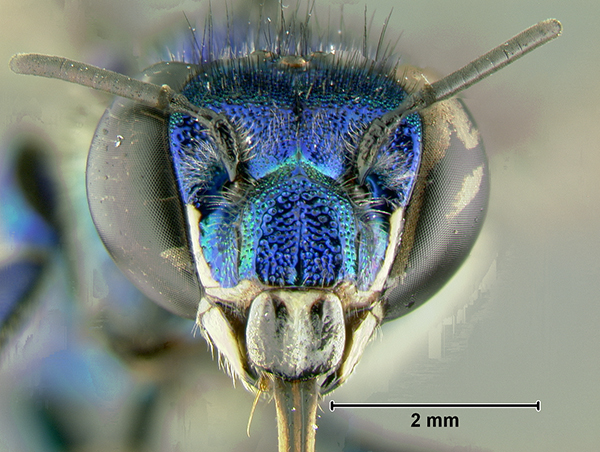
Clara Szego, Undergraduate Student
Clara is a 3rd year undergraduate majoring in Evolution, Ecology, and Biodiversity, with a minor in Quantitative Biology. She is interested in the evolution of social behavior, morphology, and chemical communication. She is excited to study gland morphology and composition in male and female orchid bees, as well as how any differences within and between sexes may relate to sex-specific behavior.

Yong Xie, Undergraduate Student
Yong is a 3rd year undergraduate majoring in Environmental Science, with a minor in Writing. She is working with Jasen to understand patterns of floral morphological evolution across neotropical orchids.

Dawson Mai, Undergraduate Student
Dawson is a 3rd year undergraduate majoring in Biological Sciences, with a minor in Managerial Economics. He is working with Jasen to understand gene expression differences among chemically-distinct Gongora orchids.
Lab Alumni
- Ashley Adams
- Julie Cridland, Project Scientist UC Davis
- Kaleigh Fisher
- Marjorie Weber, Faculty University of Michigan
- Kathy Darragh, Faculty, Indiana University
- Cheryl Dean, Senior Lab Manager, Cramer Fish Science
Postdocs & Staff:
- Philipp Brand, Postdoc at Rockefeller University
- Nicholas Saleh, Faculty at Fresno Pacific University
- Micah Freedman, Faculty at University of Toronto
- Fernanda Guizar, Computational Biologist at Brightseed, San Fransisco, CA
- Wilson Frantine (visiting student), Faculty at Universidade Estadual de Londrina
Graduate Students:
- Carly Cheung
- Michael Daigle
- James Fong
- Andrew Goffinet
- Molly Hetherington-Rauth
- Kirsten Hodgson
- Asia Jones
- Tess Linden
- Morgen Owens
- Molly Barber
- Allison Cook
- Nelly Batista
Undergraduate students:
Publications
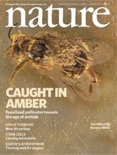

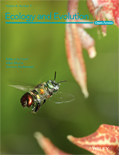
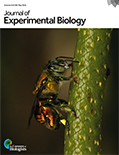
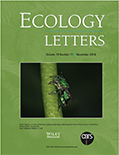
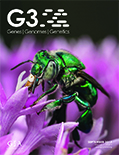
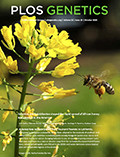
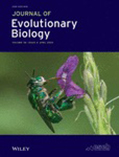
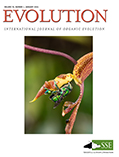
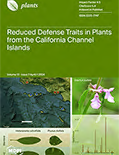
Preprints
- Saleh, N, M Ostwald, SR Ramirez. Cuticular and glandular chemistry are correlated with ovary size in two populations of the facultatively social carpenter bee, Xylocopa sonorina.[Research Square ]
2025
- Luo Y, A Takau, J Li, T Fan, BR Hopkins, Y Le, SR Ramirez, T Matsuo, A Kopp (2025) Regulatory changes in the fatty acid elongase eloF underlie the evolution of sex-specific pheromone profiles in Drosophila prolongata BMC Biology DOI: https://doi.org/10.1186/s12915-025-02220-z [PDF]
- Stell,M, M Sandoval, S Ramirez , K Darragh , S Schulz (2025) A Simplified Synthesis of HNDB (Albiducin A) and Calidiol A. Synlett DOI: 10.1055/s-0043-1773535. [PDF]
- Darragh, K, KM Kay, SR Ramirez. The Convergent Evolution of Hummingbird Pollination Results in Repeated Floral Scent Loss Through Gene Downregulation. Molecular Biology and Evolution [PDF]
- Yamhure-Ramírez D, PC Wainwright, SR Ramírez (2025) Sexual dimorphism and morphological integration in the orchid bee brain. Scientific Reports (2025) 15:8915 [PDF]
2024
- Guizar Amador MF, K Darragh, JW Liu, C Dean, D Bogarín, OA Pérez-Escobar, Z Serracín, F Pupulin, SR Ramírez (2024) The Gongora gibba genome assembly provides new insights into the evolution of floral scent in male euglossine bee-pollinated orchids. G3 Genes|Genomes|Genetics, https://doi.org/10.1093/g3journal/jkae211[PDF]
- Eltz, T, T Mende, SR Ramirez (2024) Evolution of acquired perfumes and endogenous lipid secretions in orchid bees. Journal of Chemical Ecology https://doi.org/10.1007/s10886-024-01514-w [PDF].
- Saleh, NW, J Delva, SR Ramirez, KM Kapheim, T Chouvenc (2024) Reproductive inefficiency and increased behavioral variation are associated with large group size in the orchid bee, Euglossa dilemma Insectes Sociaux https://doi.org/10.1007/s00040-024-00967-2 [PDF].
- Adams, SA, A Gurajapu, A Qiang, M Gerbaulet, S Schulz, ND Tsutsui, SR Ramirez, RG Gillespie (2024) Chemical species recognition in an adaptive radiation of Hawaiian Tetragnatha spiders (Araneae: Tetragnathidae). Proceedings of the Royal Society B 291, 20232340. [PDF].
- Freedman, MG, RW Long, SR Ramírez, SY Strauss (2024) Evidence for reductions in physical and chemical plant defense traits in island flora. Plants 13(7),1026 [PDF].
- Liu JW, P Milet-Pinheiro, G Gerlach, M Ayasse, CE Pereira Nunes, I Alves-dos-Santos, SR Ramirez (2024) Macroevolution of floral scent chemistry across radiations of male euglossine bee-pollinated plants. Evolution 78(1), 98–110 [PDF].
- Darragh K, SR Ramirez (2024) The transcriptomic signature of adaptations associated with perfume collection in orchid bees. Journal of Evolutionary Biology [PDF].
2023
- Goffinet AJ, K Darragh,N Saleh,MM Ostwald, SL Buchmann,SR Ramirez (2023) Individual variation in male pheromone production in carpenter bees correlates with size and sexual maturity. Journal of Chemical Ecology. [PDF].
- Ramirez, S.(2023) Biogeography: The origin and spread of bee lineages. Current Biology 33, R855-R878 [PDF].
- Henske,J, NW Saleh, T Chouvenc, SR Ramirez, T Eltz. The function of environmentally acquired perfume blends in male orchid bees. Current Biology 33:1-6. [PDF]
- Darragh, K, TA Linden, SR Ramirez. Seasonal stability and species specificity of environmentally acquired chemical mating signals in orchid bees. Journal of Evolutionary Biology [PDF ]
2022
- Hemstrom, WB, MG Freedman, MP Zalucki, SR Ramírez, MR Miller (2022) Population genetics of a recent range expansion and subsequent loss of migration in monarch butterflies. Molecular Ecology [PDF]
- Saleh, NW, J Henske, SR Ramírez (2022) Experimental disruption of social structure reveals totipotency in the orchid bee, Euglossa dilemma. Evolution [PDF]
- Matsunaga,T, CE Reisenman, B Goldman-Huertas, P Brand, K Miao, HC Suzuki, KI Verster, SR Ramírez, NK Whiteman (2022) Evolution of Olfactory Receptors Tuned to Mustard Oils in Herbivorous Drosophilidae. Molecular Biology and Evolution 39(2):msab362 [PDF]
2021
- Darragh, K, D Nelson, SR Ramírez (2021) The birth-and-death evolution of cytochrome P450 genes in bees. Genome Biology and Evolution 13(12) [PDF]
- Brandt K, S Dotterl, SR Ramírez, F Etl, IC Machado, DMdA Navarro Ferraz, D Dobler, O Reiser, M Ayasse, P Milet-Pinheiro. (2021) Unraveling the olfactory biases of male euglossine bees: species-specific antennal responses and their evolutionary significance for perfume flowers. Frontiers in Ecology and Evolution(9): 69 [PDF]
- Saleh,NW, K Hodgson, T Pokorny, A Mullins, T Chouvenc, T Eltz, SR Ramírez. (2021) Social behavior, ovary size, and population of origin influence the expression of cuticular hydrocarbons in the orchid bee, Euglossa dilemma. The American Naturalist 198 (5) [PDF]
2020
- Freedman, MG, H Dingle, SY Strauss, SR Ramírez (2020) Two centuries of monarch butterfly collections reveal contrasting effects of range expansion and migration loss on wing traits. Proceedings of the National Academy of Sciences 117 (46) 28887-28893 [PDF]
- Calfee, E, MN Agra, MA Palacio, SR Ramírez, G Coop (2020), Selection and hybridization shaped the rapid spread of African honey bee ancestry in the Americas. Plos Genetics 16(10): e1009038 [PDF]
- Brand, P, IA Hinojosa-Daz, R Ayala, M Daigle, CL Yurrita Obiols, T Eltz & SR Ramírez (2020) The evolution of sexual signaling is linked to odorant receptor tuning in perfume-collecting orchid bees. Nature Communications (2020) 11:244 [PDF]
2019
- Freedman, MG, C Jason, SR Ramírez, SY Strauss (2019) Host plant adaptation during contemporary range expansion in the monarch butterfly. Evolution 74:377-391. [PDF]
- Ramírez, SR (2019) Pollinator specificity and seasonal patterns in the euglossine bee-orchid mutualism at La Gamba Biological Station. Acta ZooBot Austria 156, 2019:171-181. [PDF ]
- Pokorny, TE Millahn, P Schlutting, SR Ramírez, T Eltz (2019) Correlates of display activity and perch residency of male orchid bees in cage experiments. Acta ZooBot Austria 156, 2019: 159-169. [PDF ]
- Luo, Y, Y Zhang J Farine J Ferveur S Ramírez, A Kopp (2019) Evolution of sexually dimorphic pheromone profiles coincides with increased number of male-specific chemosensory organs in Drosophila prolongata. Ecology and Evolution 2019,9:13608-13618. [PDF]
- Saleh, N, SR Ramírez (2019). Sociality emerges from solitary behaviours and reproductive plasticity in the orchid bee Euglossa dilemma. Proceedings of the Royal Society B 286: 20190588. [PDF]
2018
- Torres, CW, MA Tonione, SR Ramirez, JR Sapp, ND Tsutsui. (2018). Genetic and chemical divergence among host races of a socially parasitic ant. Ecology and Evolution 2018:1-14. [PDF]
- Brand, P., V. Larcher, A. Cuoto, JC Sandoz*, SR. Ramirez*. (2018). Sexual dimorphism in visual and olfactory brain centers in the perfume-collecting orchid bee Euglossa dilemma (Hymenoptera, Apidae). Journal of Comparative Neurology 526:2068-2077. [PDF] *equal contributions
- Weber, MG, NI Cacho, MJQ Phan, C Disbrow, SR Ramirez, SY Strauss (2018) The evolution of floral signals in relation to range overlap in a clade of California Jewelflowers (Streptanthus s.l.). Evolution 72(4):798-807. [PDF]
- Cridland, JM, SR Ramirez, CA Dean, A Sciligo, ND Tsutsui (2018) Genome sequencing of museum specimens reveals rapid changes in the genetic composition of honey bees in California. Genome Biology and Evolution 10(2):458-472. [PDF]
- Bogarin, D, M Fernandez, A Borkent, A Heemskerk, F Pupulin, S R Ramirez, ES Fmls, B Gravendeel (2018) Pollination of Trichosalpinx (Orchidaceae: Pleurothallidinae) by biting midges (Diptera: Ceratopogonidae). Botanical Journal of the Linnean Society 186:510-543. [PDF]
2017
- Brand, P, SR Ramirez (2017) The evolutionary dynamics of the odorant receptor gene family in corbiculate bees. Genome Biology and Evolution 9(8):2023-2036. [PDF]
- Brand, P, N Saleh, H Pan, C Li, KM Kapheim, SR Ramirez (2017) The nuclear and mitochondrial genomes of the facultatively eusocial orchid bee Euglossa dilemma. G3: Genes, Genomes and Genetics 7:2891-2898. [PDF]
- Cridland, J, ND Tsutsui, SR Ramirez (2017) The complex demographic history and evolutionary origin of the western honey bee, Apis mellifera. Genome Biology and Evolution 9(2):457-472. [PDF]
- Pokorny, P, I Vogler, R Losch, P Schlutting, P Juarez, N Bissantz, SR Ramirez, T Eltz (2017) Blown by the wind: the ecology of male courtship display behavior in orchid bees. Ecology 98(4):1140-1152. [PDF]
2016
- Weber, MG, L Mitko, T Eltz, SR Ramirez (2016) Macroevolution of perfume signaling in orchid bees. Ecology Letters 19:1314-1323. [PDF]
- Mitko, L, MG Weber, SR Ramirez, E Hedenstrom, WT Wcislo, and T Eltz (2016) Sensory olfactory specialization for perfume collection in male orchid bees. Journal of Experimental Biology 219:1467-1475. [PDF] | [Commentary]
- Hetherington-Rauth, M, SR Ramirez (2016) Evolution and diversity of floral scent chemistry in the euglossine bee-pollinated orchid genus Gongora. Annals of Botany 118:135-148. [PDF] | [Suppl]
- Mathis, K, S Philpott, SR Ramírez (2016) Variation in spatial scale of competing polydomous twig-nesting ants in coffee agroecosystems. Insectes Sociaux 63:447-456 [PDF]
2015
- Pokorny T, SR Ramírez, MG Weber, T Eltz (2015) Cuticular Hydrocarbons as potential close range recognition cues in orchid bees. Journal of Chemical Ecology: 41:1080-1094 [PDF]
- Brand P, SR Ramírez, F Leese, J. Javier G. Quezada-Euan, R Tollrian, and T Eltz (2015) Rapid evolution of chemosensory receptor genes in a pair of sibling species of orchid bees (Apidae: Euglossini). BMC Evolutionary Biology: 15:176 [PDF]
- Hetherington-Rauth, MC, SR Ramírez (2015) Evolutionary trends and specialization in the euglossine bee-pollinated orchid genus Gongora. Annals of the Missouri Botanical Garden 100:271-299. [PDF]
- Ramírez, SR, C Hernandez, A Link, MM Lopez-Uribe, (2015) Seasonal cycles, phylogenetic assembly, and functional diversity of orchid bee communities.Ecology and Evolution 5(9):1896-1907 [PDF] cover feature
2014
- Karban R, WC Wetzel, K Shiojiri, S Ishizaki, SR Ramírez,JD Blande (2014) Deciphering the language of plant communication: volatile chemotypes of sagebrush. New Phytologist 204: 380-385 [PDF]
2012
- Pringle EG, SR Ramírez, TC Bonbroke, DM Gordon, R Dirzo (2012) Cryptic diversity and population structure in widespread Azteca plant-ants from the northern Neotropics. Molecular Ecology 21:3576-3592 [PDF]
- Dong-Hwan, C, SR Ramírez , ND Tsutsui (2012) A silica gel based method for extracting insect surface hydrocarbons. Journal of Chemical Ecology 38:176-187 [PDF]
2011
- Eltz T, F Fritzsch, JR Pech, Y Zimmermann, JG Quezada-Euan, SR Ramírez, B Bembé (2011) Characterization of the orchid bee Euglossa viridissima and a new cryptic sibling species by morphological, chemical, and genetic characters. Zoological Journal of the Linnean Society 163: 1064-1076 [PDF]
- Ramírez SR , T Eltz, MK Fujiwara, B Goldman-Huertas, G Gerlach, ND Tsutsui, NE Pierce (2011) Asynchronous diversification in a specialized plant-pollinator mutualism. Science 333:1742-1746 [PDF | suppl.pdf ]
2010
- Lopez-Uribe M, Green A, SR Ramírez, Bogdanowicz S, Danforth BN (2010) Isolation and cross-species characterization of polymorphic microsatellites for the orchid bee Eulaema meriana (Hymenoptera: Apidae: Euglossini) Conservation Genetics Resources 3:21-23 [PDF]
- Ramírez SR , T Eltz, F Fritzsch, R Pemberton, EG Pringle, ND Tsutsui (2010) Intraspecific geographic variation of fragrances acquired by orchid bees in native and introduced populations. Journal of Chemical Ecology 36: 873-884 [PDF | suppl.pdf]
- Ramírez SR , DW Roubik, C Skov, NE Pierce (2010) Phylogeny, diversification patterns and historical biogeography of euglossine orchid bees (Hymenoptera: Apidae). Biological Journal of the Linnean Society 100(3): 552-572 [PDF | suppl.pdf]
- Ramírez SR , C Nieh, TB Quental, DW Roubik, VL Imperatriz-Fonseca, NE Pierce (2010) A molecular phylogeny of the stingless bee genus Melipona (Hymenoptera: Meliponini). Molecular Phylogenetics and Evolution 56(2): 519-525 [PDF | suppl.pdf]
2009
- Ramírez SR (2009) Orchid bees. Current Biology 19(2):1061-1063. [PDF]
- Zimmermann, Y, SR Ramírez , T Eltz (2009) Chemical niche differentiation among sympatric orchid bees. Ecology 90(11): 2994-3008. [PDF] cover feature
2008
- Singer, RB, B Gravendeel, H Cross, SR Ramírez (2008) Structural variation, taxonomic utility and evolutionary patterns of orchid pollinia. Selbyana 29(1): 6-19.[PDF]
2007
- Ramírez, SR, B Gravendeel, RB Singer, CR Marshall, NE Pierce (2007) Dating the origin of the Orchidaceae from a fossil orchid with its pollinator. Nature 448:1042-1045 [PDF | suppl.pdf] cover feature
2006
- Ramírez, S (2006) Euglossa samperi n. sp., a new species of orchid bee from the Ecuadorian Andes (Hymenoptera:Apidae). Zootaxa 1272: 61-68. [PDF]
- Parra-H A, R Ospina-Torres, S Ramírez (2006) Euglossa natesi, a new species of orchid bee from the Choco Region of Colombia and Ecuador (Hymenoptera: Apidae). Zootaxa 1298: 29-36. [PDF]
2005
- Ramírez, S (2005) Euglossa paisa new species of orchid bee from the Colombian Andes (Hymenoptera: Apidae). Zootaxa 1065: 51-60. [PDF]
2003
- Nieh, JC, FAL Contreras, S Ramírez, VL Imperatriz-Fonseca (2003) Variation in the communication of resource height by stingless bees from different habitats. Animal Behaviour 66: 1129-1139. [PDF]
- Nieh, JC, S Ramírez, P Nogueira-Neto (2003) Multi-source odor-marking of food by a stingless bee, Melipona mandacaia. Behavioral Ecology and Sociobiology 54: 578-586. [PDF]
- Ramírez, S, SA Cameron (2003) Army ant attacks by Eciton hamatum and E. rapax on nests of the Amazonian bumble bee, Bombus transversalis (Hymenoptera: Apidae). Journal of the Kansas Entomological Society 76 (3): 533-535. [PDF]
2002
- Ramírez, S, RL Dressler, M Ospina (2002) Abejas euglosinas (Hymenoptera: Apidae) de la Región Neotropical: Listado de especies con notassobre su biología. Biota Colombiana 3 (1): 7-118. [PDF]
2001
- Cameron, SA & S Ramírez (2001) Nest architecture and nesting ecology of the orchid bee Eulaema meriana (Hymenoptera: Apinae: Euglossini). Journal of the Kansas Entomological Society 74 (3): 142-165. [PDF]
- Whitfield, JB, SA Cameron, S Ramírez, K Roesch, S Messinger, OM Taylor & D Cole (2001) Review of the Apanteles species (Hymenoptera: Braconidae) attacking Lepidoptera in Bombus (Hymenoptera: Apidae) colonies in the New World, with description of a new species from South America. Annals of the Entomological Society of America 94(6): 851-857. [PDF]
Contact
Lab Location
4333, 4335, 4337 Storer Hall
Davis, CA 95616
Shipping Address
Att: Santiago Ramirez
1 Shields Ave
2320 Storer Hall
University of California Davis
Davis CA 95616-5270
United States
sanram@ucdavis.edu
Lab
+1 (530) 752-5380
